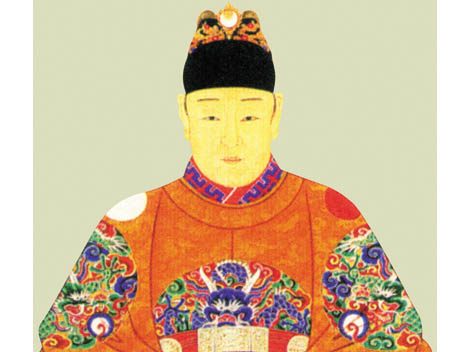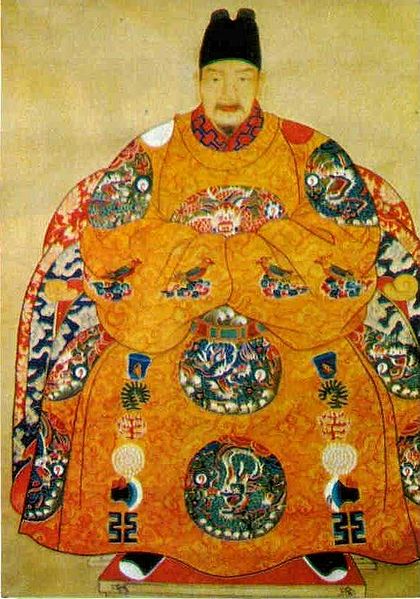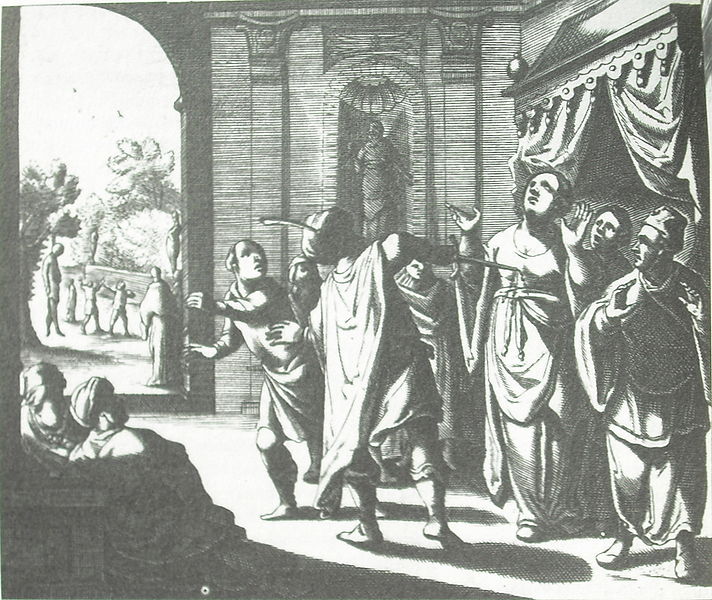<Back to Index>
- Physicist Charles Wheatstone, 1802
- Writer and Statesman Julian Ursyn Niemcewicz, 1758
- Emperor of the Ming Dynasty Chongzhen, 1611
PAGE SPONSOR


The Chongzhen Emperor (simplified Chinese: 崇祯; traditional Chinese: 崇禎; pinyin: Chóngzhēn; Wade-Giles: Ch'ung-chen/old spelling: Ch'ung-cheng) (February 6, 1611 - April 25, 1644) was the 16th and last emperor of the Ming Dynasty in China. He reigned from 1627 to 1644, under an era name that means "honorable and auspicious".
Born Zhu Youjian (朱由檢), Chongzhen was the fifth son of the Taichang Emperor. As such, he grew up in a relatively quiet environment, since most of the younger sons were left out of the power struggle that their elder brother the Tianqi Emperor had to endure. Chongzhen succeeded his brother to the throne at age 17 and immediately eliminated the eunuch Wei Zhongxian and Madam Ke, who had become de facto rulers of the empire.
Chongzhen tried to rule by himself and did his best to salvage the dynasty.
However, years of internal corruption and an empty treasury made it
almost impossible to find capable ministers to fill important
government posts. Chongzhen also tended to be suspicious of the few
skilled subordinates he did have, executing the famous general Yuan Chonghuan, who had almost single handedly maintained the northern frontier against the Manchus, in 1630. The collapse of the Ming intensified during Chongzhen's reign. Popular uprisings broke out throughout China, including those of Zhang Xianzhong and the more important Li Zicheng. These could not be put down by the already hard pressed Ming armies, who had to contend with the Manchu threat to the north. In April 1644, Li prepared to take the Ming capital of Beijing. Rather than face capture and probable execution at the hands of the newly proclaimed Shun Dynasty,
Chongzhen arranged a feast and gathered all members of the imperial
household aside from his sons. Using his sword, he killed all of them
there. All died except his second daughter, Princess Chang Ping,
whose attempt to resist the sword blow resulted in her left arm being
severed by her father. Then, still wearing his imperial attire,
Chongzhen fled to Jingshan Hill and committed suicide when he hanged himself from a tree. He was buried in Siling of the Ming Dynasty Tombs - the last to be buried there. The Shun Dynasty lasted less than year until Li's defeat at the Battle of Shanhai Pass, with the victorious Manchus establishing the Shunzhi Emperor of the Qing Dynasty as ruler of all China. After Chongzhen's death, loyalist forces had proclaimed a Southern Ming Dynasty in Nanjing, naming Zhu Yousong, Prince of Fu as the Hongguang Emperor. However, in 1645 Qing armies started to move
against the remnants of the Ming, and Nanjing surrendered on June 8,
1645. Zhu was captured on June 15 and brought to Beijing, where he died
the following year. The dwindling Ming were continually pushed farther
south, and the last Emperor of the Southern Ming, Zhu Youlang, Prince of Gui, was finally executed in Burma in 1662 by Qing general Wu Sangui.
While
Chongzhen was not especially incompetent by the standards of the later
Ming – most direct blame for the dynasty's fall being laid at the feet
of the Wanli Emperor –
and was generally credited as hard working, he has been criticized for
his paranoia and inflexibility. Chongzhen's attempts at reform did not
take into account the considerable decline of Ming power, which was
already far advanced at the time of his accession. His betrayal of Yuan Chonghuan, in particular, has greatly damaged his contemporary reputation.
